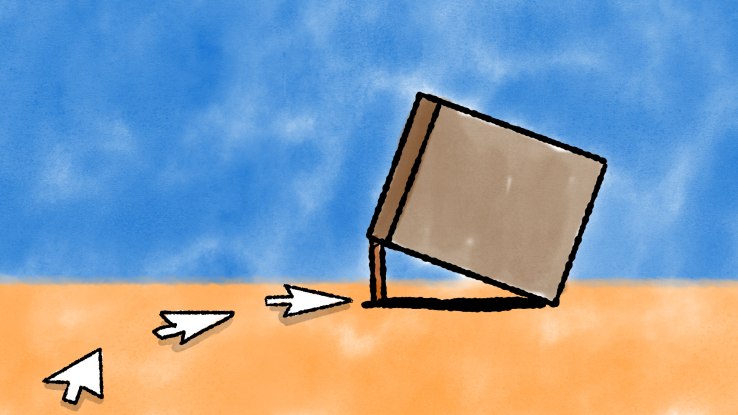
Let’s settle this, once and for all: Clickbaiting is the intentional act of over-promising or otherwise misrepresenting — in a headline, on social media, in an image, or some combination — what you’re going to find when you read a story on the web.
Currently, clickbait is often characterized by wording like, “You won’t believe” or “What happened next will shock you,” or other unverifiable assertions in a desperate attempt to spark your curiosity into a click.
Publishers who practice clickbait social strategy the most reliably are often viral mills like Distractify and ViralNova. (ClickHole is a fun example because it parodies clickbait so effectively that its headlines still work as clickbait.)
At its worst, this strategy indicates that the publisher is at a loss for how to sell audiences on a story (perhaps due to having sub par content to begin with). Sometimes you’ll find these headlines on social media or on traffic-generating widgets like Taboola, click on them and find yourself with an unoriginal story that just repeats (or even distorts) facts from another site that reported the story first. If you’re really lucky, you’ll get to click through multiple pages before you realize how lame the story really is.
Why do publishers do it?
Two words: page views. Most sites use traffic numbers like page views or unique visitors to bill advertisers and measure their general success. Being a news site isn’t easy, business-wise.
Most publishers are guilty of using clickbait to promote stories because when it comes down to it, you still click. Readers will take the bait and the publisher is rewarded with a page view.
Anyone who’s trying to distribute information online is at the mercy of the big companies like Facebook and Google that help people discover their content. Publishers are constantly challenged by changing algorithms and the task of reframing and optimizing stories for social distribution — which is why the formula for clickbait might change, but the existence of sensationalistic, attention-grabbing headlines never quite goes away.
For publishers, there’s an extremely delicate balance when it comes to having great content and great framing, and staying on-brand is even more important. Having a site that’s discoverable on social media, loads quickly, includes engaging photos and videos, is easy to navigate, leaves you having learned something new, doesn’t spam you with pop ups and doesn’t crash your phone — pulling it all off is tough.
So there’s a series of trade offs at work facing anyone who’s trying to make money from content in the oh-so-flawed world of online publishing.
Who decides what is and isn’t clickbait?
While there are some terrible headlines that qualify as the worst of the worst, there’s also an enormous gray area, which is one of the reasons the word gets thrown around so often, sometimes leading to heated arguments about whether or not a story is clickbait.
In the tech world, Nellie Bowles has suggested that executives and investors will disparage any story that paints them in an unflattering light as “clickbait” — something that plenty of TechCrunch writers have experienced. Indeed, one of the authors of this post used to work with an editor who suggested that “clickbait” was just another word for “writing stories that people want to read.”
Or consider BuzzFeed Editor-in-Chief Ben Smith’s assertion that his site “doesn’t do clickbait,” a statement that may have set a media industry record for number of eyebrows raised. But in Smith’s view, no matter how ridiculous or attention-grabbing a BuzzFeed headline might be, the story gives you exactly what’s promised.
For Smith, the key distinction lies in deception. With real clickbait, the headline might promise Paris Hilton topless, or a weird trick that will help you lose weight — and then completely fail to deliver. On the other hand, you might not like yourself for clicking on a headline about Kim Kardashian or cute pugs — but if you click, then you can’t exactly claim to be disappointed when you’re served a superficial, gossipy story, or a gallery of unbearably cute dog photos.
Oh, and yes, some readers might also think that a story headlined, “WTF is clickbait?” is clickbait itself. The fact is, TechCrunch is fighting your attention along with everyone else. But hopefully after clicking, you got what you were expecting — or something even better!
Why is clickbait bad?
It’s bad for both sides. It’s obviously annoying to have your social feeds spammed by over-promising headlines that lead you to an under-delivering half-stories on domains that crash your phone.
Related Articles
Facebook's new anti-clickbait algorithm buries bogus headlinesHe wrote about clickbait but what happened next will stun youFilter.ly Helps Publishers Cut Through Internet NoiseFor publishers: You can’t just can’t use headlines as a means to an end, and overusing a clickbait social strategy implies that you don’t understand your audience. One size fits all is stupid. Treat your audience like it’s smart, and remember the complexities of the modern media landscape and how hard it is to build audience trust.
And if you’re a reader, remember that your favorite sites should treat you like you’re in a long-term relationship. They should invest in you, with accurate and engaging headlines that lead to quality journalism, good use of media and a friendly UX, rather than trying to trick you into giving a single, grudging click (the Internet’s equivalent of a one-night stand). As with any relationship, you shouldn’t settle.
No comments:
Post a Comment